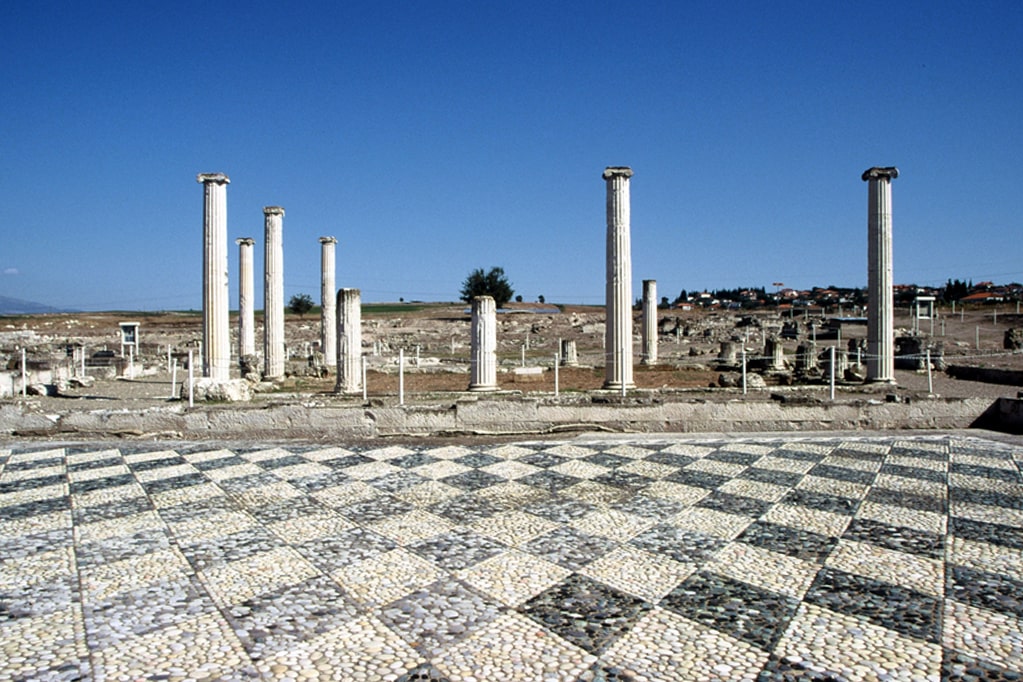
Transportation by luxury car (Mini Bus) and driver from Thessaloniki to the archaeological site of Pella. The ancient city, as we know it today, with the urban planning system of the last quarter of the 4th c.e.g. and the Hellenistic modifications and reconstructions, spreads over an area of approximately 4,000 acres. The oldest residential remains of the first building phase of the Macedonian capital came to light in the area of the complexes of the sanctuary of the healer god Darronos. Its great expansion and reconstruction, favored by the smooth topography, took place during the reign of Cassander (316-298 BC) with the removal of the northern wall of the classical city and its cemetery in the area of the Agora. The urban plan of the city draws up rectangular flat (47 m.) building blocks, with varying lengths (110, 125, 133, 152 m.), divided evenly by vertical (N-S) and horizontal (E-W) streets, 6 and 9 m wide respectively.
In the center of the city is the Hellenistic Agora of the city, which has total dimensions of 260 x 238 meters and is fully integrated into the urban plan of the city, occupying an area of 10 building blocks. The Agora must have been built during the reign of Cassander (end of the 4th century BC) on the site of the city’s classical cemetery and was the commercial, administrative and social center of Hellenistic Pella until its destruction, 200 years later, probably from an earthquake.
Of the numerous sanctuaries of Hellenistic Pella known from sources and chance finds, three have been excavated. The building complex of the area of the sanctuary of Darronos, the local healer god, is located in the southwestern part of the city. The sanctuary of the Mother of the Gods and Aphrodite, where the two deities were worshiped as protectors of the city, is located immediately north of the Agora. The worship of the two deities was identified by the votive offerings of the sanctuary, which were found in and around the temple of the southern outdoor area, but also in storage and laboratory areas, where these were manufactured and stored. A third sanctuary, the Thesmophorio of the city, was discovered on its northeastern borders, within the modern settlement of Pella. In this rural sanctuary, a simple circular enclosure with an altar in the center and carvings in the natural rock (the so-called “megara” of Demeter, where the piglets sacrificed in honor of the goddess were thrown), the inhabitants of Pella celebrated – as in the rest of Greece space – during the autumn festival of Thesmophoria, which looked forward to a good harvest.
At a short distance from the eastern and western walls of Hellenistic Pella, the cemeteries of the city begin, which occupy a large area, reaching to the west to Nea Pella and to the east to the border of the rural area of Pella to Chalcedon. The cemeteries that have been excavated near the walls are denser, while at a greater distance, mainly Macedonian-type and box-shaped tombs of large size are found. The necropolis covers the period from the 4th century BC to the end of Roman times and includes all types of burial buildings and constructions found during this period in cemeteries of the rest of Greece.
